- Making Wood Chips After Pruning the Garden and Vineyard – Use a Shredder Expert Gardening Tips
- Introduction
- Benefits of Using a Shredder
- Expert Gardening Tips for Making Wood Chips
- Conclusion
- Why Pruning is Important for the Garden and Vineyard
- Benefits of Using a Shredder for Wood Chip Making
- Choosing the Right Shredder for Wood Chip Making
- Type of shredder:
- Power source:
- Capacity:
- Safety features:
- Cost and warranty:
- Preparing the Pruned Garden and Vineyard for Wood Chip Making
- 1. Gather the Pruned Branches and Vines
- 2. Sort and Remove Unwanted Materials
- 3. Cut the Branches and Vines into Manageable Pieces
- 4. Pre-Wet the Branches and Vines
- 5. Set Up the Shredder
- 6. Feed the Branches and Vines into the Shredder
- 7. Collect the Wood Chips
- 8. Dispose of or Reuse the Remaining Wood Chips
- Step-by-Step Process of Making Wood Chips with a Shredder
- 1. Gather the Materials
- 2. Prepare the Shredder
- 3. Wear Protective Gear
- 4. Load the Machine
- 5. Operate the Shredder
- 6. Collect the Wood Chips
- 7. Repeat the Process
- 8. Store or Use the Wood Chips
- 9. Clean Up
- 10. Maintain the Shredder
- Proper Handling and Storage of Wood Chips
- 1. Sourcing and Collection
- 2. Transportation and Unloading
- 3. Spreading and Mulching
- 4. Composting
- 5. Storage
- 6. Turning
- 7. Safety Precautions
- Using Wood Chips as Mulch in the Garden and Vineyard
- Tips and Tricks for Successful Wood Chip Making
- Question-answer:
- Why is it important to make wood chips after pruning the garden and vineyard?
- Can I use a regular lawn mower to make wood chips?
- What are the benefits of using wood chips in the garden and vineyard?
- How long does it take for wood chips to decompose?
- What size should the wood chips be?
- Can I use wood chips from diseased plants?
- Video: Wood Chip Gardening After One Year. The Good and the Bad.
Pruning is an essential task in maintaining a healthy garden and vineyard. It helps promote growth, control the size and shape of plants, and improve overall aesthetics. However, after pruning, you are often left with piles of branches and twigs that need to be disposed of. Rather than throwing them away or burning them, consider turning them into valuable wood chips.
Wood chips are a versatile material that can be used for various purposes in the garden and vineyard. They help suppress weeds, retain moisture in the soil, regulate soil temperature, and add organic matter as they decompose. Making your own wood chips allows you to recycle the pruned branches and twigs while benefiting your plants and reducing waste.
To efficiently turn your pruned branches into wood chips, consider using a shredder. A shredder is a machine specifically designed to break down branches and twigs into smaller pieces, making them easier to handle and accelerate the decomposition process. By using a shredder, you can quickly turn your garden and vineyard waste into valuable mulch without the need for manual labor.
When choosing a shredder, opt for one that is powerful enough to handle the diameter of your branches and has safety features to prevent accidents. It’s also important to follow the manufacturer’s instructions and wear appropriate protective gear, such as goggles and gloves, when operating a shredder.
Expert Gardening Tip: If you don’t have access to a shredder, you can also use a chipper or rent one from a local garden center or hardware store. Alternatively, you can hire a professional tree care service that specializes in chipping and shredding. They have the equipment and expertise to efficiently turn your pruned branches into wood chips.
By turning your pruned branches into wood chips, you can make the most of your garden and vineyard waste while improving the health and productivity of your plants. So next time you prune your garden or vineyard, don’t discard those branches – use a shredder and transform them into valuable wood chips!
Making Wood Chips After Pruning the Garden and Vineyard – Use a Shredder Expert Gardening Tips
Introduction
Pruning is an essential task in maintaining a healthy garden and vineyard. It helps to shape plants, remove dead or diseased branches, and promote better growth. After pruning, one of the ways to deal with the resulting branches and trimmings is to turn them into wood chips. Wood chips have multiple uses in gardening, such as mulch, compost, or pathway covering. In this article, we will discuss the benefits of using a shredder to make wood chips and provide expert gardening tips.
Benefits of Using a Shredder
Using a shredder to make wood chips offers several advantages:
- Efficiency: A shredder can quickly and efficiently shred branches and trimmings into small wood chips, saving you time and effort compared to manual methods.
- Uniformity: Shredders produce consistent-sized wood chips, which can be useful for mulching or composting purposes.
- Volume reduction: By shredding the branches and trimmings, you can significantly reduce their volume, making it easier to manage and transport the wood chips.
- Waste reduction: Instead of disposing of the pruned branches and trimmings, using a shredder allows you to repurpose them into valuable wood chips, reducing waste and saving money on mulch or compost.
Expert Gardening Tips for Making Wood Chips
Here are some expert gardening tips to consider when making wood chips after pruning your garden and vineyard:
- Choose the right shredder: There are different types of shredders available, such as electric shredders or gasoline-powered shredders. Consider the size of your garden or vineyard and the amount of pruning you typically do when selecting a shredder.
- Follow safety precautions: When operating a shredder, always wear protective gear, such as gloves, goggles, and ear protection. Follow the manufacturer’s instructions and guidelines to ensure safe operation.
- Prepare the branches: Before feeding branches into the shredder, remove any leaves or twigs. Cut larger branches into manageable sizes to avoid overloading the shredder.
- Feed branches gradually: Feed branches into the shredder in small batches to prevent clogging and ensure smooth operation. Avoid forcefully pushing the branches into the shredder; instead, let the shredder work at its own pace.
- Collect and store wood chips: After shredding, collect the wood chips in a container or directly spread them in the desired area. If storing, ensure the wood chips are well aerated and dry to prevent mold or fungus growth.
Conclusion
Using a shredder to make wood chips after pruning your garden and vineyard is an efficient and sustainable way to repurpose the pruned branches and trimmings. The wood chips can be used for various gardening purposes, such as mulching or composting. By following expert gardening tips, you can make the most out of your shredder and create quality wood chips for your garden and vineyard.
Why Pruning is Important for the Garden and Vineyard
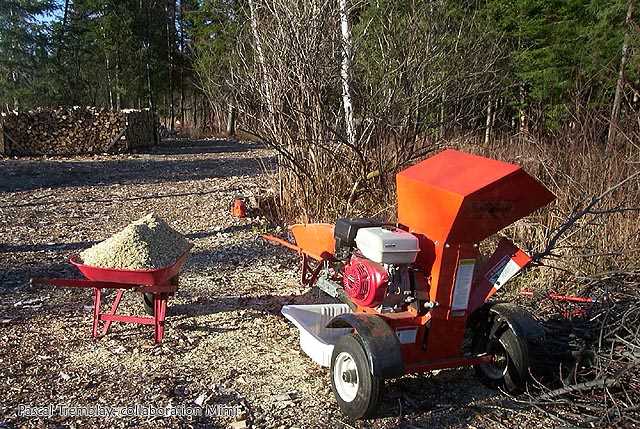
Pruning plays a crucial role in maintaining the health and productivity of both gardens and vineyards. Here are some key reasons why pruning is important:
- Promotes Plant Health: Pruning helps to remove dead, damaged, or diseased branches, which can harbor pests and diseases. By removing these branches, pruning improves the overall health of plants, reducing the risk of infestations and infections.
- Enhances Air Circulation: Dense foliage and overcrowded branches can hinder air circulation within plants. Pruning opens up the canopy, allowing better airflow and reducing the chances of mold and fungal growth.
- Encourages Growth: Pruning stimulates new growth by directing the plant’s energy towards developing healthier and stronger branches. Properly pruned plants tend to produce more flowers, fruits, and vegetables.
- Shapes Plants: Pruning helps to shape plants, promoting a more aesthetically pleasing appearance. It allows gardeners to control the size and form of shrubs, trees, and vines, ensuring they fit within the desired space.
- Improves Sunlight Penetration: Removing excessive branches and foliage through pruning allows more sunlight to reach the lower parts of plants. This is especially important for vineyards, as it aids in optimal grape ripening and flavor development.
- Controls Pests and Diseases: Pruning removes branches that can serve as a pathway for pests and diseases to spread. It also helps expose potential pest hiding places, making it easier to manage infestations.
It is important to note that pruning should be done at the right time and with proper techniques to achieve the desired results. Each plant species has specific pruning requirements, so it is advisable to consult a gardening expert or refer to pruning guides for guidance.
Benefits of Using a Shredder for Wood Chip Making
Using a shredder to make wood chips after pruning the garden and vineyard is a practical and efficient way to manage your garden waste. Here are some benefits of using a shredder for wood chip making:
- Reduces waste: A shredder helps to reduce the volume of garden waste by breaking down the pruned branches and vines into smaller chips. This makes it easier to dispose of the waste or incorporate it back into the garden as mulch.
- Saves time and effort: Instead of manually cutting and chopping the branches, a shredder does the work for you. It saves you time and effort by quickly turning the waste into usable wood chips.
- Improves garden soil: Wood chips produced by a shredder can be used as an organic mulch to improve the quality of your garden soil. They help to suppress weeds, retain moisture, regulate soil temperature, and add nutrients to the soil as they decompose.
- Provides a sustainable solution: By using a shredder to make wood chips, you are utilizing the pruned branches and vines that would otherwise go to waste. This promotes sustainability by reducing the need for additional materials and minimizing the environmental impact of your gardening activities.
- Cost-effective: Investing in a shredder may seem like an upfront cost, but in the long run, it can save you money. By creating your own wood chips, you eliminate the need to purchase mulch or hire someone to remove your garden waste.
- Versatile use: Wood chips produced by a shredder can have various applications. They can be used as mulch in the garden, as a bedding material for livestock, or as fuel for biomass boilers.
Overall, using a shredder for wood chip making is a practical and beneficial choice for managing garden waste effectively. It saves you time and effort, improves your garden soil, promotes sustainability, and offers versatile uses for the wood chips produced.
Choosing the Right Shredder for Wood Chip Making
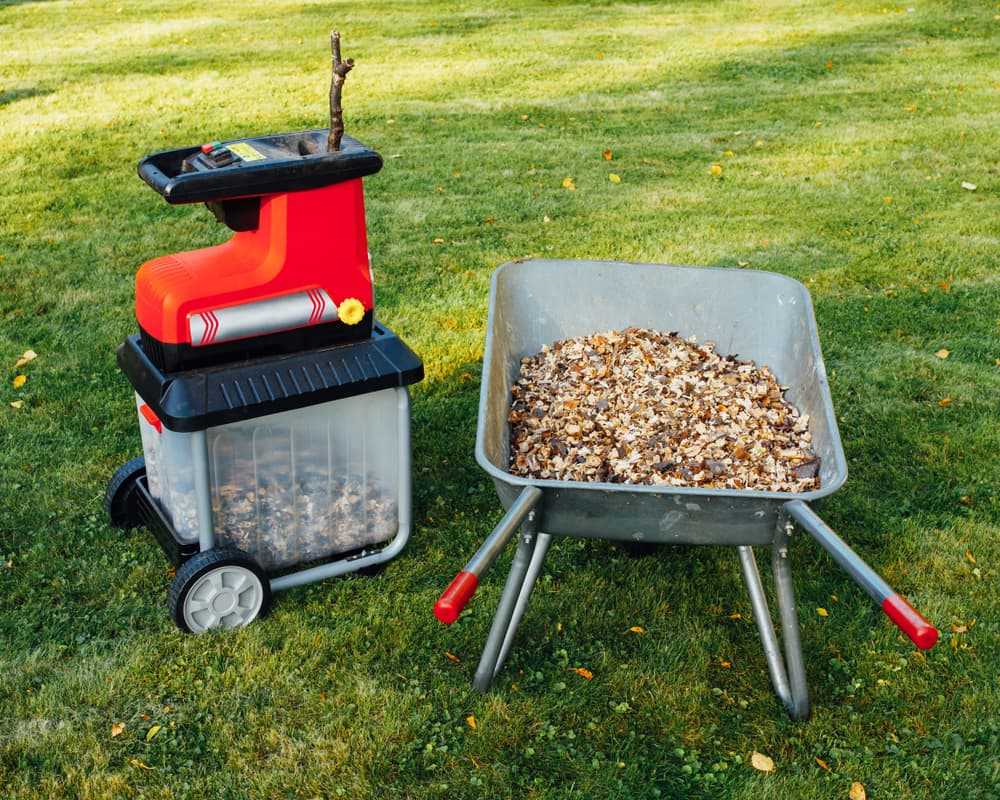
When it comes to making wood chips after pruning your garden and vineyard, using a shredder is essential. A shredder is a machine specifically designed to break down branches and other organic materials into smaller pieces, which can then be used as mulch or compost. However, not all shredders are created equal, and it’s important to choose the right one for your needs. Here are some factors to consider:
Type of shredder:
There are two main types of shredders available – impact shredders and drum shredders. Impact shredders use blades to chop the branches into smaller pieces, while drum shredders rely on a rotating drum with sharp teeth to shred the material. Impact shredders are generally more affordable and suitable for smaller branches, while drum shredders are more powerful and capable of handling larger branches.
Power source:
Shredders can be powered by electricity or gasoline. Electric shredders are quieter, more compact, and require less maintenance. They are suitable for small to medium-sized gardens. Gasoline shredders, on the other hand, are more powerful and better suited for larger gardens or vineyards, where a constant power supply may not be available.
Capacity:
The capacity of a shredder refers to the maximum diameter of branches it can handle effectively. Determine the average size of the branches you will be shredding and choose a shredder with a capacity that can accommodate them. It’s important not to overload the shredder, as this can cause damage and reduce its efficiency.
Safety features:
When operating a shredder, safety should be a top priority. Look for a shredder with safety features such as an automatic shutdown system in case of overload or jamming, a safety switch, and a chute with a safety cover to prevent debris from flying out.
Cost and warranty:
Consider your budget and compare the prices of different shredders. Keep in mind that cheaper shredders may not be as durable or efficient as higher-end models. Additionally, check the warranty offered by the manufacturer to ensure that you’re protected against any defects or malfunctions.
- Consider the type of shredder based on your needs
- Choose the power source that suits your garden or vineyard size
- Select a shredder with the capacity to handle your branches
- Ensure the shredder has proper safety features
- Compare prices and check warranty before making a purchase
By taking these factors into consideration, you can choose the right shredder for making wood chips after pruning your garden and vineyard. This will help you efficiently recycle the organic materials and contribute to the health of your plants and soil.
Preparing the Pruned Garden and Vineyard for Wood Chip Making
1. Gather the Pruned Branches and Vines
Before you can start making wood chips, you need to gather all the pruned branches and vines from your garden and vineyard. Make sure to remove any leaves or debris from the branches to ensure a clean and efficient chipping process.
2. Sort and Remove Unwanted Materials
Once you have gathered the pruned branches and vines, sort through them and remove any unwanted materials such as rocks, weeds, or any other non-organic matter. This will prevent damage to the shredder and ensure a higher quality end product.
3. Cut the Branches and Vines into Manageable Pieces
Using a pruner or a saw, cut the branches and vines into manageable pieces. This will make it easier to feed them into the shredder and help ensure a consistent chipping process. Aim for pieces that are approximately 1-2 inches in diameter.
4. Pre-Wet the Branches and Vines
Prior to chipping, it is recommended to pre-wet the branches and vines. This will make the material softer and easier to chip, as well as reduce the amount of dust produced during the chipping process.
5. Set Up the Shredder
Ensure that the shredder is set up in a safe and stable location, preferably on a flat surface. Follow the manufacturer’s instructions to properly set up and adjust the shredder for the size of the branches and vines you will be chipping.
6. Feed the Branches and Vines into the Shredder
Once the shredder is set up, start feeding the branches and vines into the shredder one piece at a time. Avoid overloading the shredder, as this can lead to inefficiencies or even damage the machine.
7. Collect the Wood Chips
As the shredder chips the branches and vines, collect the wood chips in a container or on a tarp. You can use these wood chips for various purposes in your garden and vineyard, such as mulching, composting, or pathway covering.
8. Dispose of or Reuse the Remaining Wood Chips
Dispose of any remaining wood chips that you do not plan to use, or find creative ways to reuse them. For example, you can use wood chips as bedding for livestock, fuel for biomass energy, or as decorative elements in landscaping.
By following these steps, you can effectively prepare the pruned branches and vines from your garden and vineyard for wood chip making. This process will not only help you dispose of the pruned material efficiently but also provide you with valuable resources to enhance your gardening and landscaping endeavors.
Step-by-Step Process of Making Wood Chips with a Shredder
1. Gather the Materials
Before starting the process of making wood chips, gather the necessary materials:
- A wood shredder or chipper machine
- Pruned garden and vineyard branches
- Gloves and safety goggles
- A sturdy container or bag to collect the wood chips
2. Prepare the Shredder
Set up the wood shredder or chipper machine in a suitable location. Make sure it is secured properly, and the power source is connected.
3. Wear Protective Gear
Put on gloves and safety goggles to protect yourself from any debris or flying wood chips during the shredding process.
4. Load the Machine
Start feeding the pruned branches into the shredder or chipper machine’s hopper. Follow the manufacturer’s instructions on the maximum branch diameter that the machine can handle.
As you feed the branches, make sure to keep your hands at a safe distance from the machine’s opening to avoid any accidents.
5. Operate the Shredder
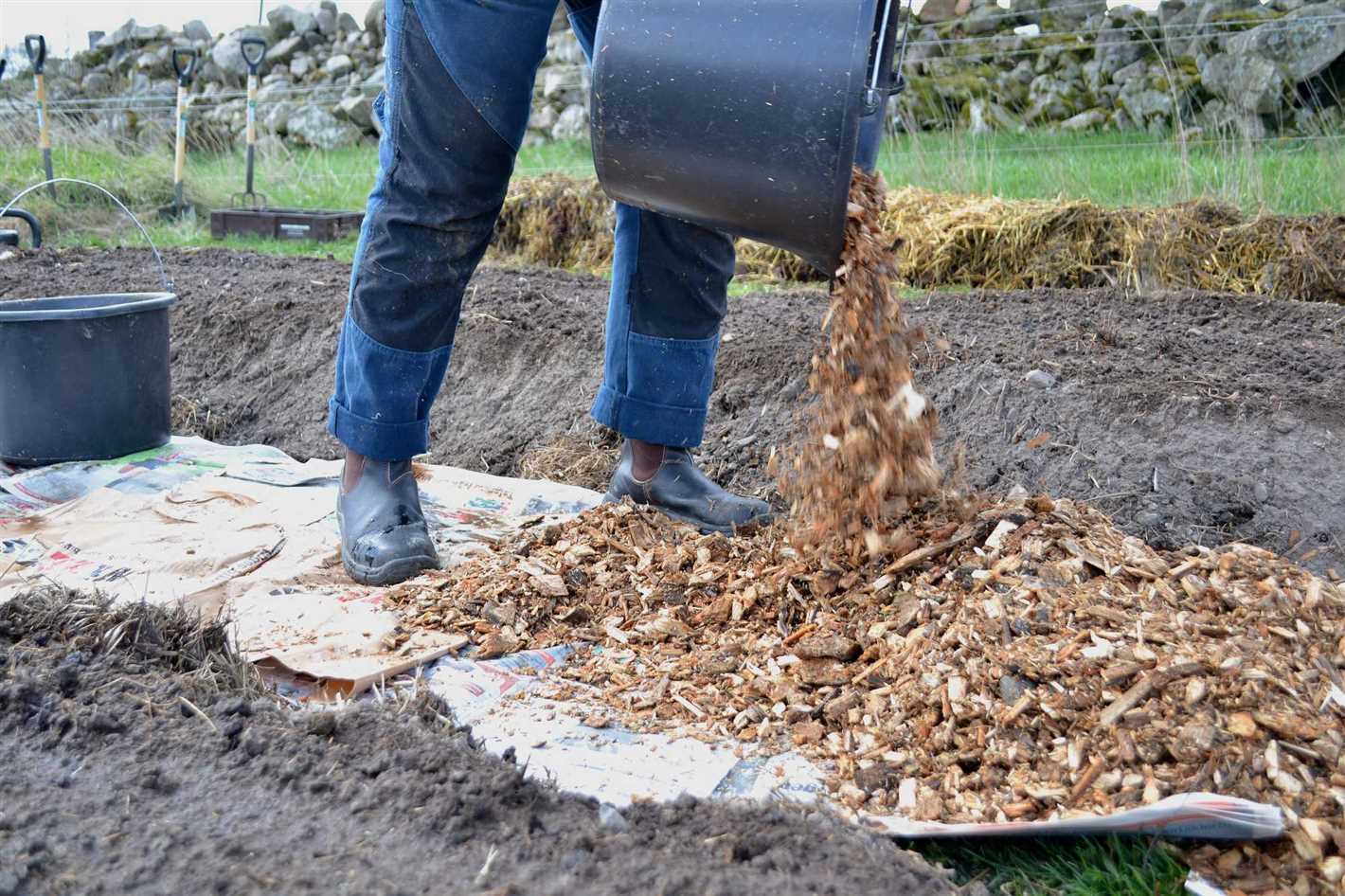
Turn on the shredder or chipper machine and allow it to process the branches. The machine will shred the branches into wood chips, which will be expelled from the machine’s outlet.
6. Collect the Wood Chips
Position a sturdy container or bag below the machine’s outlet to collect the wood chips as they are expelled. Make sure the container is securely positioned to avoid any spills.
7. Repeat the Process
Continue the process until all the pruned branches have been shredded and turned into wood chips.
8. Store or Use the Wood Chips
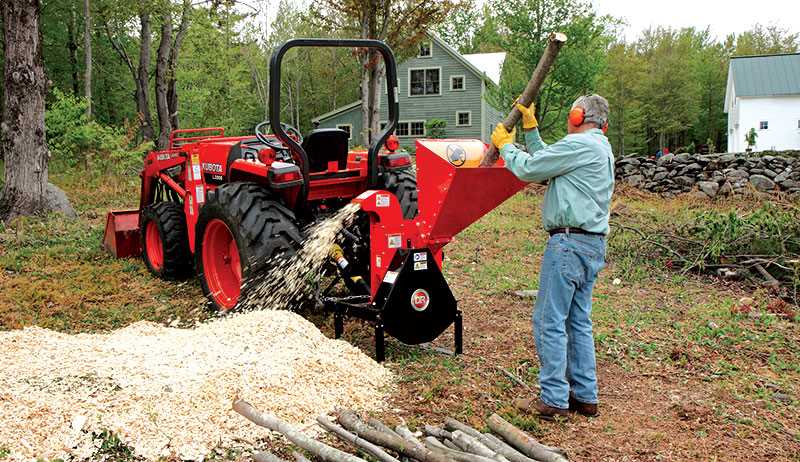
Once you have collected the wood chips, you can store them for later use or spread them as mulch in your garden or vineyard. Wood chips act as a natural weed suppressant, help retain moisture, and provide insulation for plant roots.
Note: Avoid using wood chips from diseased trees or plants, as they may spread diseases to healthy plants.
9. Clean Up
After you have finished making wood chips, clean up any debris or wood fragments around the shredder or chipper machine. Properly dispose of any waste materials.
10. Maintain the Shredder
Regularly clean and maintain the shredder or chipper machine according to the manufacturer’s instructions to ensure its efficient operation and longevity.
By following this step-by-step process, you can easily and safely make wood chips with a shredder or chipper machine. Remember to always prioritize safety and wear appropriate protective gear while operating the machine.
Proper Handling and Storage of Wood Chips
Wood chips are a valuable resource that can be used in various ways in gardening and landscaping. However, it is important to handle and store wood chips properly to maintain their quality and prevent any potential issues. Here are some tips for proper handling and storage of wood chips:
1. Sourcing and Collection
When collecting wood chips, make sure to source them from trees and plants that are free from diseases and pests. Avoid collecting chips from trees that have been treated with chemicals or have shown signs of rot or decay.
2. Transportation and Unloading
Transport the wood chips in a suitable vehicle or container that can prevent them from spilling or scattering during transportation. When unloading, use a wheelbarrow or other appropriate equipment to transfer the chips to the desired location.
3. Spreading and Mulching
Spread the wood chips evenly in the desired area. A layer of wood chips can be used as mulch to suppress weeds, conserve moisture, and regulate soil temperature. Make sure to spread them in a layer of 2-4 inches for optimal effectiveness.
4. Composting
If you have a composting system, wood chips can be added to the compost pile to enhance the carbon-to-nitrogen ratio. Mix the wood chips with green materials such as grass clippings or kitchen scraps to promote a balanced decomposition process.
5. Storage
When storing wood chips, it is important to keep them in a dry and well-ventilated area. If they are left exposed to excessive moisture or humidity, they may start to decompose and produce unpleasant odors. Use tarps or covers to protect the wood chips from rain and excessive sunlight.
6. Turning
If you are planning to use the wood chips for composting or as mulch, it is beneficial to turn them occasionally to ensure proper airflow and decomposition. This will help accelerate the breakdown process and produce nutrient-rich compost or mulch.
7. Safety Precautions
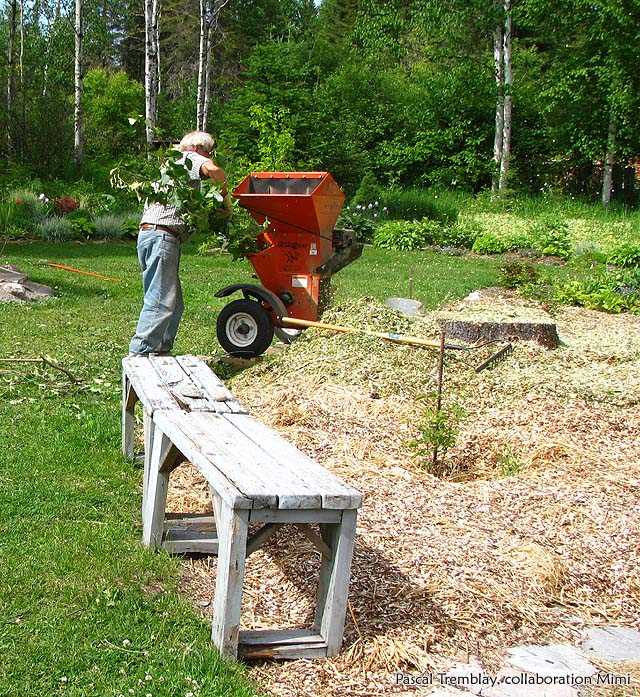
When handling wood chips, it is important to wear appropriate protective gear such as gloves and goggles to prevent injury. Be cautious of any sharp objects, nails, or foreign materials that may be mixed in with the wood chips.
By following these tips for proper handling and storage, you can maximize the benefits of wood chips and ensure their quality for use in your garden or landscaping projects.
Using Wood Chips as Mulch in the Garden and Vineyard
Wood chips obtained after pruning the garden and vineyard can be effectively used as mulch to benefit the plants. Mulching with wood chips offers several advantages:
- Moisture Retention: Wood chips act as a barrier, reducing evaporation and keeping the soil moist for a longer period of time.
- Weed Suppression: A thick layer of wood chips prevents weed growth by blocking sunlight and inhibiting weed seed germination.
- Temperature Regulation: Wood chips act as insulation, protecting plant roots from extreme temperatures and reducing soil temperature fluctuations.
- Soil Improvement: Over time, wood chips break down and add organic matter to the soil, improving its structure, fertility, and water holding capacity.
When using wood chips as mulch, it’s important to follow these guidelines:
- Apply a layer of wood chips about 2 to 4 inches thick around the base of plants, leaving a small space around the plant stem to prevent moisture accumulation and potential rot.
- Avoid piling wood chips directly against the trunks of trees or the stems of plants, as this can lead to moisture-related issues and promote pest and disease development.
- Periodically check the wood chip layer and replenish it as needed to maintain the desired thickness. The wood chips will gradually decompose, so adding fresh chips is necessary.
- Avoid using wood chips from treated or stained wood, as they may contain chemicals that can be harmful to plants and the soil.
- Consider using a mix of wood chips and other organic materials, such as compost or straw, to provide additional nutrients and improve overall soil health.
Using wood chips as mulch in both the garden and vineyard can significantly benefit plant growth and overall soil health. It’s an environmentally friendly practice that helps conserve water, control weeds, and improve soil conditions, ultimately leading to healthier and more productive plants.
Tips and Tricks for Successful Wood Chip Making
- Choose the Right Shredder: Select a shredder that is suitable for the size and type of wood you will be chipping. Consider factors such as power, capacity, and shredding mechanism when making your choice.
- Prepare the Wood: Remove any large branches or debris from the wood before shredding. This will help ensure a smoother and more efficient chipping process.
- Feed the Shredder Properly: Make sure to follow the manufacturer’s instructions for feeding the shredder. Avoid overloading it with too much wood at once, as this can lead to jams or inefficiency.
- Consider Safety: Wear appropriate protective gear, such as gloves and safety glasses, while operating the shredder. Keep a safe distance from the machine and never put your hands or any body parts near the feeding chute.
- Mix Different Types of Wood: For best results, mix different types of wood when making wood chips. This will create a more diverse and nutrient-rich mulch for your garden or vineyard.
- Monitor the Output: Regularly check the quality and consistency of the wood chips being produced. Adjust the shredder settings if necessary to achieve the desired chip size and texture.
- Use Wood Chips Properly: Once you have made the wood chips, use them as mulch around plants or as a decorative ground cover. Avoid piling them too thickly around plant stems to prevent moisture buildup and potential decay.
- Store Wood Chips: If you have excess wood chips, store them in a dry and well-ventilated area to prevent mold or mildew. Use a tarp or cover to protect them from rain and excessive moisture.
- Compost Excess Wood: If you have more wood chips than you can use, consider composting them. Wood chips can add valuable carbon to the compost pile and help create nutrient-rich soil for future gardening projects.
Question-answer:
Why is it important to make wood chips after pruning the garden and vineyard?
Making wood chips after pruning helps to recycle the plant material and turn it into a valuable resource. It also helps to control pests, retain moisture in the soil, and improve soil fertility.
Can I use a regular lawn mower to make wood chips?
A regular lawn mower is not designed to handle branches and woody material. It is best to use a shredder or chipper specifically designed for this purpose.
What are the benefits of using wood chips in the garden and vineyard?
Wood chips help to suppress weeds, retain moisture in the soil, regulate soil temperature, and add organic matter to the soil as they decompose. They also provide a clean and attractive mulch layer.
How long does it take for wood chips to decompose?
The time it takes for wood chips to decompose depends on several factors, including the type of wood, the size of the chips, and environmental conditions. On average, it can take anywhere from six months to two years for wood chips to fully decompose.
What size should the wood chips be?
The ideal size of wood chips for use in the garden and vineyard is between 1-3 inches in diameter. This allows for better air circulation, water penetration, and decomposition.
Can I use wood chips from diseased plants?
It is generally not recommended to use wood chips from diseased plants in the garden and vineyard. The disease can potentially spread to other plants. It is best to dispose of the infected plant material properly.







